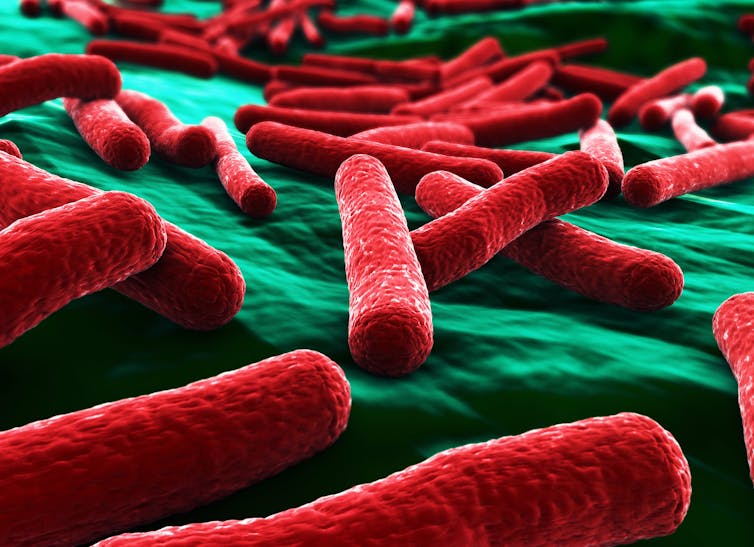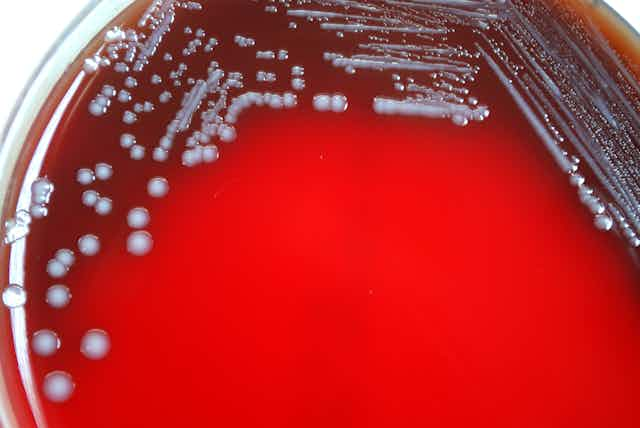Modern society is built on the silicon chip. It’s almost impossible to imagine life without these tiny plastic slabs that have become embedded into the fabric of civilisation. But because computers in their widest sense are just information-processing machines, they don’t have to be built from silicon. We can view the brain, bacteria, DNA molecules and possibly even the entire universe itself as computers.
Many researchers are now investigating the computational power of these kinds of natural systems. Rather than take on the huge challenge of replicating the exquisite molecular machinery that has evolved inside living organisms, scientists are trying to modify these biological computers and harness their material properties. This could let us build bio-bots for producing drugs or cleaning up pollution.
But one thing we’re still missing is a reliable, biological version of permanent computer memory. We need a way to construct a molecular record of the outcome of biological computations so the results can outlive the living cells that produced them. New research has recently moved us closer towards this goal by building a bacterial machine that can remember the order of chemical signals.
Modern computers channel electrons around silicon pathways and process information represented as digital 1s and 0s, like switches turned on or off. Biological computers, on the other hand, are analogue machines that represent information with measurements of physical quantities, such as a sliding scale of molecular concentrations.
Complex circuits
In a living machine such as a bacterium, its circuits come in the form of the genetic code stored in DNA, which records all of the genes required to make it tick. For example, in one of the standard bacteria used in synthetic biology, E. coli, the genetic code is made up of a single circular chromosome roughly 4.6m characters long. Rather than being arranged into a “blueprint”, where different parts of the plan directly correspond with different parts of the organism, this genetic code or “genome” takes the form of an almost unimaginably complex circuit.
The products of one gene might affect the behaviour of other genes, which might also be affected by the external environment, and so on. This produces a cascade of chemical signalling that is central to biological development, growth and metabolism. It’s only once we understand how a particular gene responds to different types and strengths of signal, that we can add it to our list of potential “parts” for a modified biological computer.
We’re still a long way from a complete understanding of the E. coli wiring diagram, but we know enough about specific regions of it to be able to patch in new components, or modify connections between existing parts. In this way, we can piggyback on the existing circuit, and introduce new, human-defined functionality into the cell such as the ability to detect light.

However, what’s often missing from most existing bio-devices is permanent storage. We can build synthetic circuits than can compute a result, but ideally we’d also like to be able to remember it. Bacteria such as E. coli already use this ability when they’re foraging for food, by moving towards stronger concentrations of nutrients.
In order to be able to do this, the bugs have to be able to compare where they are now with where they’ve just been. If they’re moving in the right direction, and things are getting better, then they don’t do anything, but if things are getting worse, they know to take action (by changing direction). This ability to remember is crucial to evolutionary success. If future synthetic biological devices are to be scaled up, we need to find a reliable way to construct permanent memory from molecules and have it work inside living cells.
Stored in the circuit
Rather than representing stored values using molecular concentrations (which decay over time), researchers have used the genome itself as the basis of memory. By using enzymes in the cell, we now have the ability to selectively delete or “flip” sections of the bacterial genome as it processes information according to a specific “program” circuit that we’ve engineered.
In this way, the results of computations can be stored, but – more importantly – they are inherited when the cell divides, and passed on down the generations. This persistent memory will be crucial to the long-term success of synthetic biology, as it means that the results of computations can outlive the individual cells that produced them.
The latest research on this topic takes this development one stage further. The work, published in the journal Science, shows how this method could be used to build bacterial machines capable of remembering the order in which three chemical “buttons” (signals) were pressed. Although the research is very much in its infancy, the authors argue this approach could be applied to studies of cancer in mammalian cells. This is because the order in which events such as mutations occur can influence how the disease plays out and affect, for example, how the tumour cells respond to targeted therapy.
More generally, giving cells the ability to remember things long-term opens up possibilities for sophisticated engineered bio-sensors that can store a record of cellular events over many generations. This has the potential to fundamentally change how we approach research into ageing, disease, and biological development, by providing a built-in “captain’s log” for the living cell.

